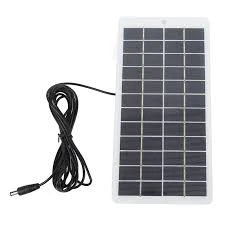different size solar panels
The Impact of Different Size Solar Panels on Energy Efficiency and Applications
As the world increasingly turns towards renewable energy, solar power has emerged as a leading alternative to fossil fuels. One of the key factors influencing the adoption and efficiency of solar power systems is the size of the solar panels. Different sizes of solar panels offer various advantages and drawbacks, impacting everything from installation to energy production. In this article, we will explore how the size of solar panels affects their application, efficiency, and overall feasibility for different users.
Understanding Solar Panel Sizes
Solar panels come in various sizes, typically measured in watts. Common sizes include 60-cell panels (around 300-350 watts) and 72-cell panels (around 350-400 watts). Additionally, there are smaller panels designed for residential, portable, and even specialized applications. The physical dimensions of these panels can vary, with standard sizes being approximately 39 inches by 65 inches for 60-cell panels and 39 inches by 77 inches for 72-cell panels.
Energy Output and Efficiency
One of the primary factors that differentiate solar panels is their energy output. Larger panels generally produce more electricity, meaning fewer panels are required to meet specific energy needs. This can result in lower installation costs and reduced labor expenses during installation. For instance, a residential system designed with larger panels can occupy less roof space while effectively meeting the household’s energy demands.
However, larger panels are often heavier and may require more robust mounting systems, potentially complicating installation on certain rooftops. In contrast, smaller panels might be easier to install and reposition, making them ideal for areas with space constraints or for mobile applications, such as RVs.
Applications Residential vs. Commercial
different size solar panels

The choice of solar panel size often depends on the intended application. In residential settings, homeowners typically opt for panels that will fit the available roof space while providing sufficient energy for their needs. Here, the balance between size, power output, and aesthetic appeal is crucial. Many homeowners prefer sleek, compact panels that blend well with their home’s architecture without dominating the rooftop.
For commercial settings, larger panels are usually favored due to their higher energy output, which is necessary for powering larger facilities. Businesses often seek to maximize their energy production, and utilizing larger panels can be more cost-effective in the long run. Furthermore, commercial installations can often accommodate the heavier weight of larger panels, negating potential installation challenges present in smaller residential spaces.
The Role of Space and Efficiency
The available installation space is a crucial factor influencing the choice of panel size. For urban areas where rooftops are limited, smaller, more efficient panels may be the best option. Developers and architects may need to consider the orientation and angle of the panels, as well as potential shading from surrounding buildings. In contrast, rural areas where space is abundant might benefit from larger, more powerful panels that can harness the open sunlight over vast areas.
Efficiency ratings must also be taken into account. Higher efficiency panels can produce more energy from less sunlight, making them a desirable option in conditions where sunlight is less predictable, such as in northern latitudes or cloudy regions. While larger panels might have lower efficiency ratings, their overall power output can still outweigh this downside when appropriately matched to beneficial conditions.
Conclusion
In conclusion, the size of solar panels plays a vital role in determining their suitability for various applications and environments. Whether you are a homeowner, a business owner, or someone considering portable solar options, understanding the implications of different panel sizes can help you make informed decisions. Smaller panels may provide flexibility and ease of installation, while larger panels can maximize energy output and efficiency. Ultimately, the key is to align the choice of solar panel size with the specific energy needs, available space, and aesthetic considerations of the installation site. As technology continues to evolve, there will undoubtedly be further advancements in the design and efficiency of solar panels, allowing for even more tailored solutions to meet our diverse energy requirements.
-
String Solar Inverter: The High-Efficiency Solution for Smart Solar EnergyNewsJul.14,2025
-
Revolutionizing Rooftop Energy with the Power of the Micro Solar InverterNewsJul.14,2025
-
Power Independence with Smart Off Grid Solar Inverter SolutionsNewsJul.14,2025
-
On Grid Solar Inverter: Powering the Future with Smart Grid IntegrationNewsJul.14,2025
-
Monocrystalline Solar Panels: High-Efficiency Power for the Future of Clean EnergyNewsJul.14,2025
-
Bifacial Solar Panel: A Smarter Investment for Next-Generation Energy SystemsNewsJul.14,2025







